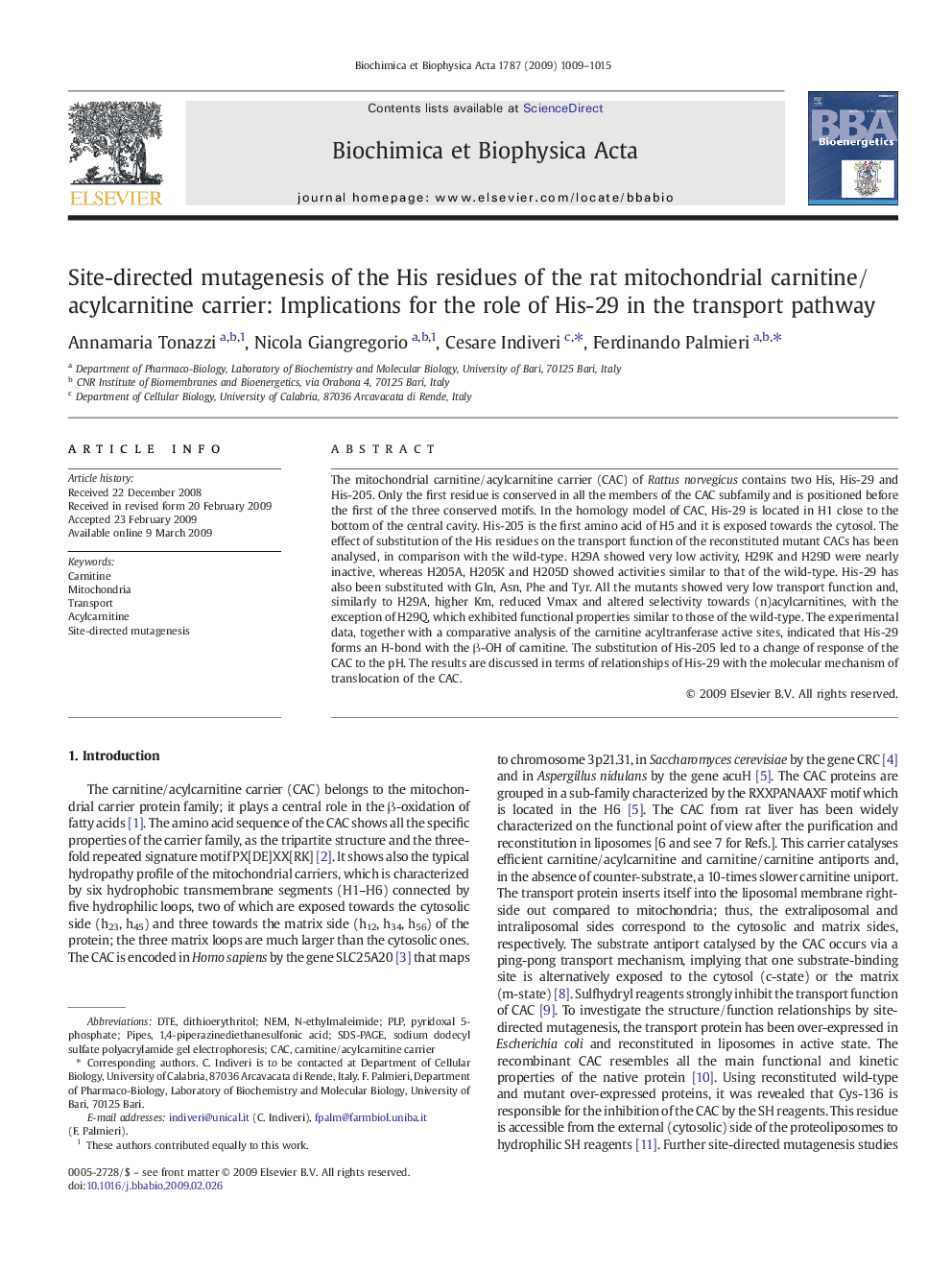| Article ID | Journal | Published Year | Pages | File Type |
|---|---|---|---|---|
| 1943136 | Biochimica et Biophysica Acta (BBA) - Bioenergetics | 2009 | 7 Pages |
The mitochondrial carnitine/acylcarnitine carrier (CAC) of Rattus norvegicus contains two His, His-29 and His-205. Only the first residue is conserved in all the members of the CAC subfamily and is positioned before the first of the three conserved motifs. In the homology model of CAC, His-29 is located in H1 close to the bottom of the central cavity. His-205 is the first amino acid of H5 and it is exposed towards the cytosol. The effect of substitution of the His residues on the transport function of the reconstituted mutant CACs has been analysed, in comparison with the wild-type. H29A showed very low activity, H29K and H29D were nearly inactive, whereas H205A, H205K and H205D showed activities similar to that of the wild-type. His-29 has also been substituted with Gln, Asn, Phe and Tyr. All the mutants showed very low transport function and, similarly to H29A, higher Km, reduced Vmax and altered selectivity towards (n)acylcarnitines, with the exception of H29Q, which exhibited functional properties similar to those of the wild-type. The experimental data, together with a comparative analysis of the carnitine acyltranferase active sites, indicated that His-29 forms an H-bond with the β-OH of carnitine. The substitution of His-205 led to a change of response of the CAC to the pH. The results are discussed in terms of relationships of His-29 with the molecular mechanism of translocation of the CAC.
